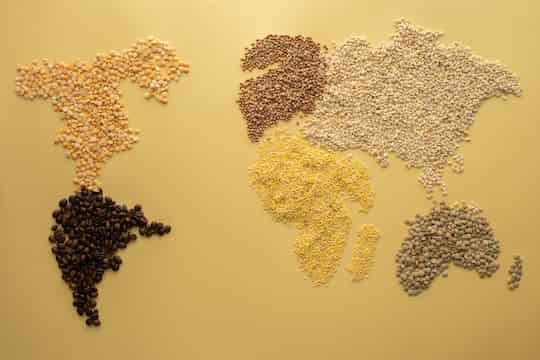A staple food that is effective in reducing blood glucose levels and the risk of diabetes.
Millets, a type of cereal crop including sorghum, are highly nutritious and due to their low Glycaemic Index (GI) can lower blood glucose levels and the risk of type 2 diabetes.
A study found that people who ate millet every day saw a 15 percent reduction in their blood glucose levels.
Also, the blood sugar levels for those who were diabetic went to pre-diabetes and from pre-diabetic to the normal range.
The research suggests that minimally processed millets lead to a better glycaemic response.
Millets are 30 percent more effective in reducing the GI than refined grains such as white flour and white rice.
Carbohydrates present in the food determine a person’s glycaemic response to a food or meal and the GI is a rating system for foods based on their number of carbohydrates.
Carbohydrates affect blood glucose levels and so a high GI food will cause a quick rise in blood sugar levels.
It is likely that the number of people with diabetes will be 51 percent higher by 2045.
In 2019, the number of diabetics was 463 million, but the figure will increase to 700 million in 2045.
A sedentary lifestyle and the type of food we consume appear to be the main causes of obesity and type 2 diabetes.
Refined grains are staples that in many countries make up 80 percent of the daily calorie intake.
Therefore, replacing these with more nutritious and low GI staple foods would be the key in managing and preventing diabetes.
Professor Ian Givens, the study’s co-author, said:
“Awareness of this ancient grain is just starting to spread globally, and our review shows millets having a promising role in managing and preventing type 2 diabetes.
In the largest review and analysis of research into different types of millet compared to other grains such as refined rice, maize and wheat we found that millets outperform their comparison crops with lower GI and lower blood glucose levels in participants.”
The researchers point out that millets have a GI of 52. 7 which is 36 percent lower than staple foods such as white flour, white rice, and maize.
Dr Jacqueline Hughes, Director-General of ICRISAT, said:
“The global health crisis of undernutrition and over-nutrition coexisting is a sign that our food systems need fixing.
Greater diversity both on-farm and on-plate is the key to transforming food systems.
On-farm diversity is a risk mitigating strategy for farmers in the face of climate change while on-plate diversity helps counter lifestyle diseases such as diabetes.
Millets are part of the solution to mitigate the challenges associated with malnutrition, human health, natural resource degradation, and climate change.
Trans-disciplinary research involving multiple stakeholders is required to create resilient, sustainable and nutritious food systems.”
The study was published in the journal Frontiers in Nutrition (Anitha et al., 2021).

